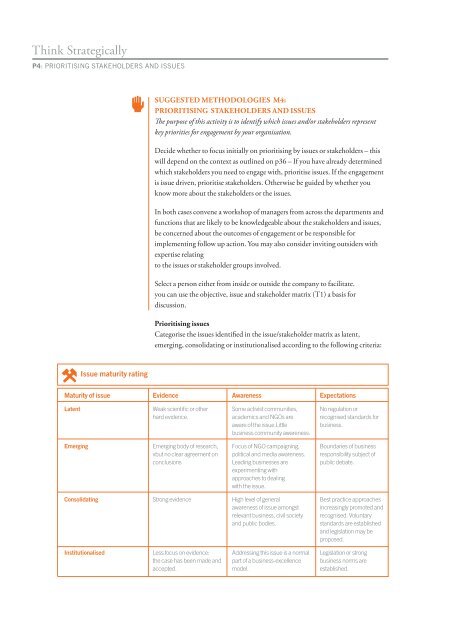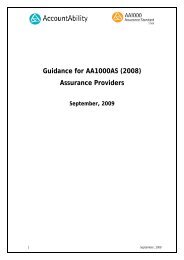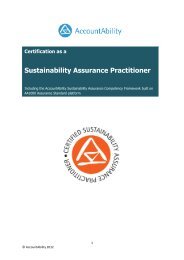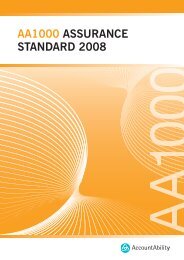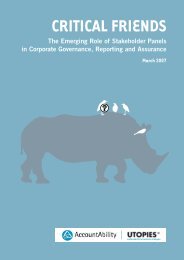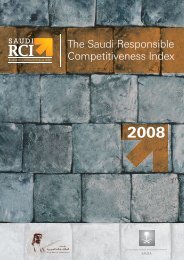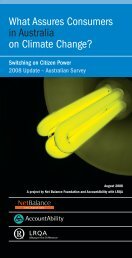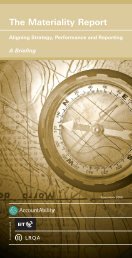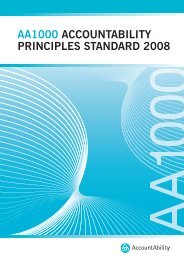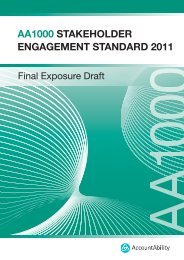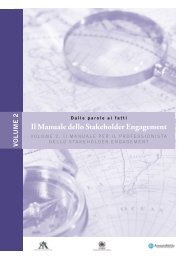The Stakeholder Engagement Manual Volume 2 - AccountAbility
The Stakeholder Engagement Manual Volume 2 - AccountAbility
The Stakeholder Engagement Manual Volume 2 - AccountAbility
You also want an ePaper? Increase the reach of your titles
YUMPU automatically turns print PDFs into web optimized ePapers that Google loves.
Think Strategically<br />
P4: PRIORITISING STAKEHOLDERS AND ISSUES<br />
Maturity of issue<br />
Latent<br />
Emerging<br />
Issue maturity rating<br />
Consolidating<br />
Institutionalised<br />
SUGGESTED METHODOLOGIES M4:<br />
PRIORITISING STAKEHOLDERS AND ISSUES<br />
Th e purpose of this activity is to identify which issues and/or stakeholders represent<br />
key priorities for engagement by your organisation.<br />
Decide whether to focus initially on prioritising by issues or stakeholders – this<br />
will depend on the context as outlined on p36 – If you have already determined<br />
which stakeholders you need to engage with, prioritise issues. If the engagement<br />
is issue driven, prioritise stakeholders. Otherwise be guided by whether you<br />
know more about the stakeholders or the issues.<br />
In both cases convene a workshop of managers from across the departments and<br />
functions that are likely to be knowledgeable about the stakeholders and issues,<br />
be concerned about the outcomes of engagement or be responsible for<br />
implementing follow up action. You may also consider inviting outsiders with<br />
expertise relating<br />
to the issues or stakeholder groups involved.<br />
Select a person either from inside or outside the company to facilitate.<br />
you can use the objective, issue and stakeholder matrix (T1) a basis for<br />
discussion.<br />
Prioritising issues<br />
Categorise the issues identifi ed in the issue/stakeholder matrix as latent,<br />
emerging, consolidating or institutionalised according to the following criteria:<br />
Evidence<br />
Weak scientifi c or other<br />
hard evidence.<br />
Emerging body of research,<br />
vbut no clear agreement on<br />
conclusions<br />
Strong evidence<br />
Less focus on evidence:<br />
the case has been made and<br />
accepted.<br />
Awareness<br />
Some activist communities,<br />
academics and NGOs are<br />
aware of the issue.Little<br />
business community awareness.<br />
Focus of NGO campaigning,<br />
political and media awareness.<br />
Leading businesses are<br />
experimenting with<br />
approaches to dealing<br />
with the issue.<br />
High level of general<br />
awareness of issue amongst<br />
relevant business, civil society<br />
and public bodies.<br />
Addressing this issue is a normal<br />
part of a business-excellence<br />
model.<br />
Expectations<br />
No regulation or<br />
recognised standards for<br />
business.<br />
Boundaries of business<br />
responsibility subject of<br />
public debate.<br />
Best practice approaches<br />
increasingly promoted and<br />
recognised. Voluntary<br />
standards are established<br />
and legislation may be<br />
proposed.<br />
Legislation or strong<br />
business norms are<br />
established.


